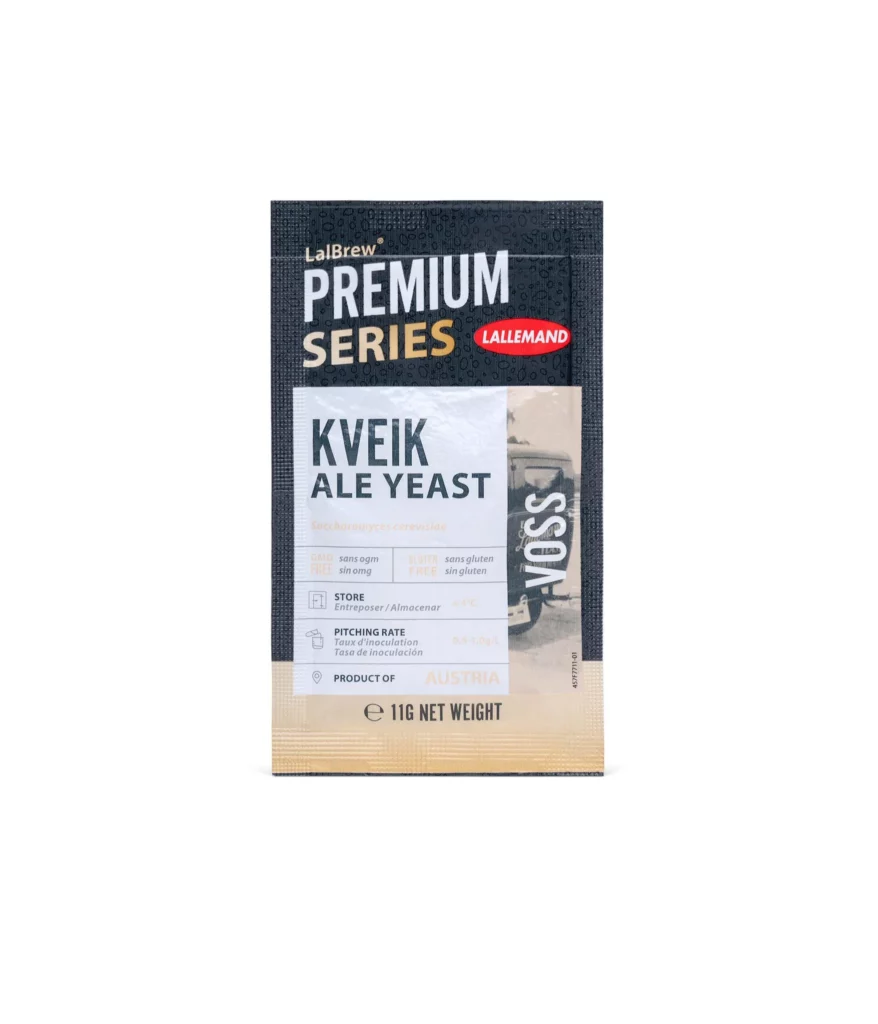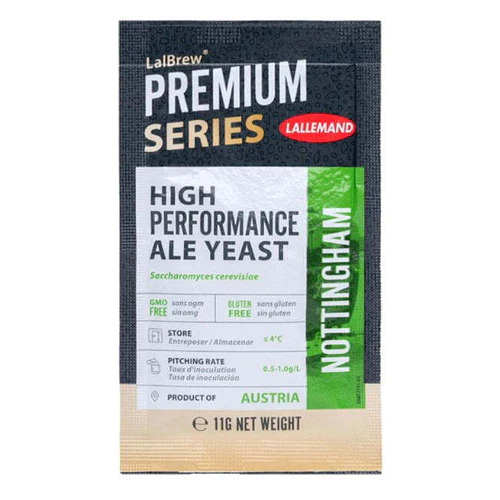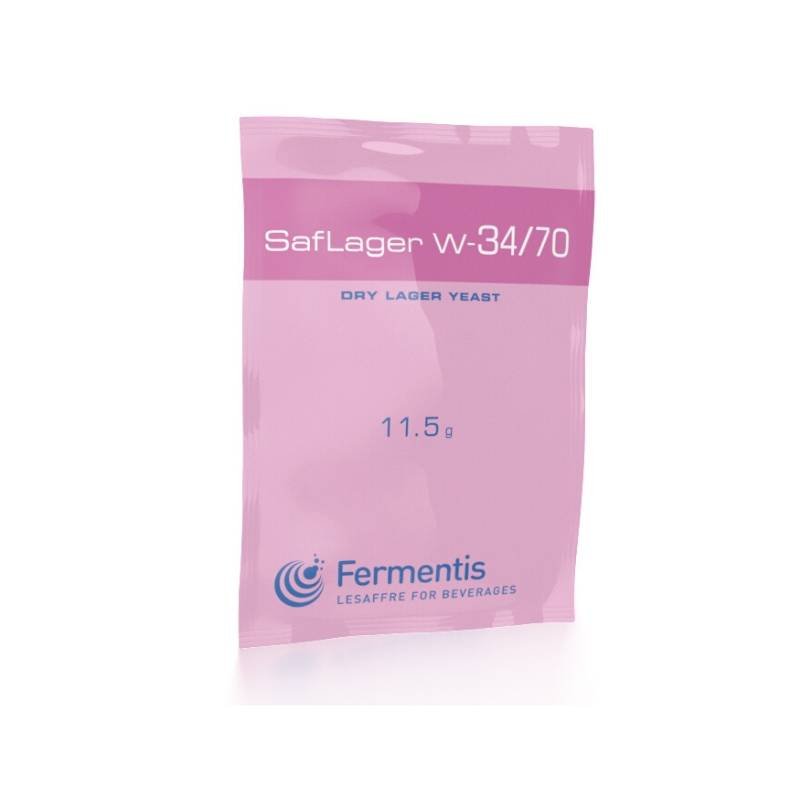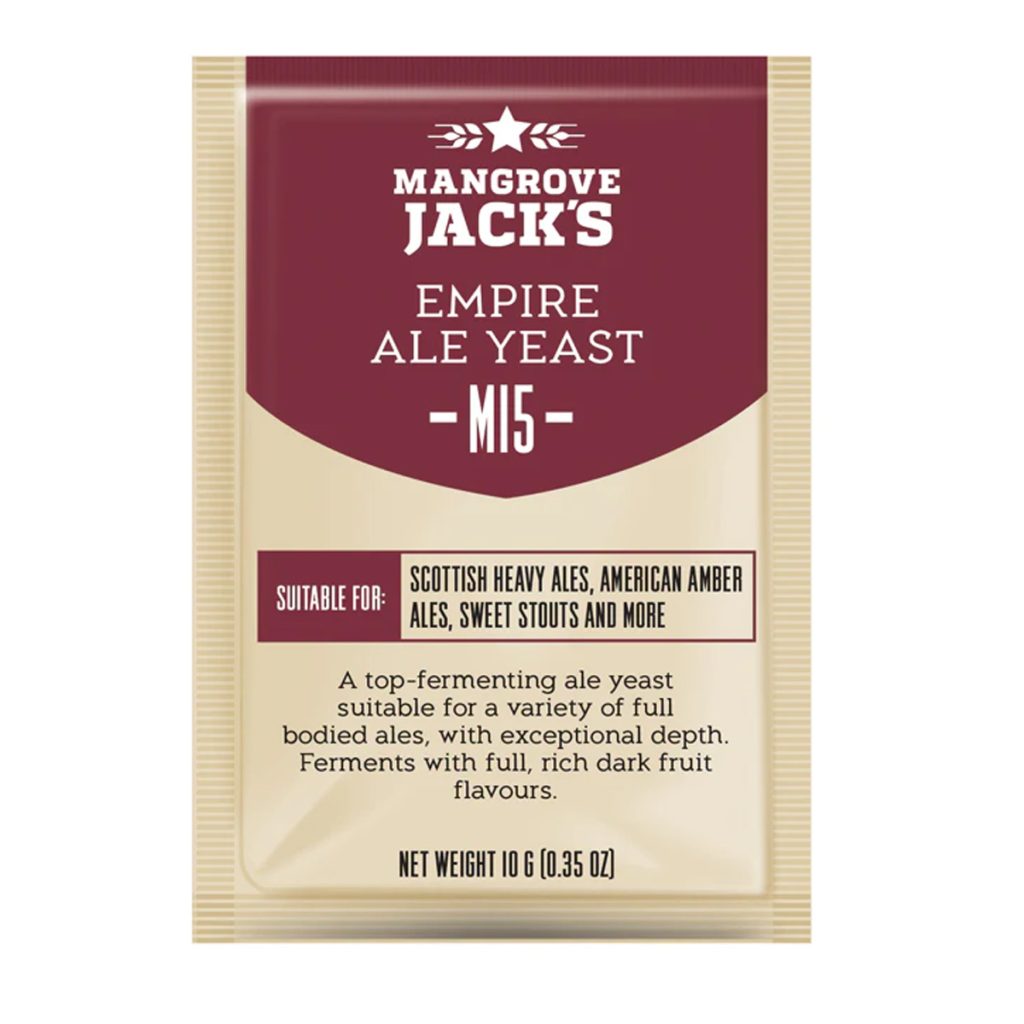Venturing into homebrewing with Coopers kits opens a world of creativity and personalization, particularly when diving into the yeast selection world. Many homebrewers, just like you and me, have faced the challenge of overcoming the “twang” associated with kit beers and longing for a brew that truly resonates with our unique taste preferences.
As someone who has navigated the vast sea of yeast options to enhance the flavors and aromas of my homebrews, I understand the impact of choosing just the right strain. This guide is crafted from my journey through countless batches, aiming to demystify the yeast selection process for fellow enthusiasts.
Whether you’re fine-tuning your brewing technique or experimenting with new flavor profiles, selecting the perfect yeast can transform your Coopers homebrew from good to exceptional.
Let’s embark on this flavorful journey together, exploring the top fermentation choices that will elevate your homebrewing game.
Best Yeast Types for Coopers Homebrew
When choosing a yeast for your Coopers homebrew, it’s important to select one that suits the style of beer you’re aiming to produce.
Yeast contributes significantly to the flavour, aroma, and body of your beer, making selection crucial for optimal results.
Below you’ll find some different options for various Coopers kits, allowing you to perfect your homebrewing craft.
| Yeast Type | Suggested Kits | Fermentation Temperature |
|---|---|---|
| Safale US-05 | Lager, Draught, Mexican Cerveza, European Lager, Pilsener, IPA, Australian Pale Ale, Sparkling Ale, English Bitter | 18 – 26°C |
| Danstar Nottingham | Lager, Draught, Mexican Cerveza, European Lager, Pilsener, IPA, Australian Pale Ale, Sparkling Ale, English Bitter, Irish Stout | 10 – 25°C |
| Verdant IPA | IPA, Australian Pale Ale, Sparkling Ale | 18 – 23°C |
| Lallemand Novalager | Lager, European Lager, Pilsener, IPA | 10 – 20°C |
| Fermentis SafLager W-34/70 | Lager, European Lager, Pilsener | 12 – 15°C |
| Mangrove Jack’s M15 Empire Ale | Lager, English Bitter, Irish Stout, Dark Ale, Real Ale | 18 – 22°C |
| Kveik Voss | IPA, Australian Pale Ale, Sparkling Ale | 35-40°C |
Fermentis Safale US-05
Suggested Kits
- Coopers Lager
- Coopers Draught
- Coopers Mexican Cerveza
- Coopers European Lager
- Coopers Pilsener
- Coopers IPA
- Coopers Australian Pale Ale
- Coopers Sparkling Ale
- Coopers English Bitter
Important Info
Fermentation Temperature: 18 – 26°C
Pitch Rate: 50 to 80 g/100 litres (10g – 16g per 20L)
Attenuation: 78-82%
Flocculation: Medium
SafAle US-05 is a powerhouse, known for producing clean, crisp beers that let your malt and hop choices shine. Its low production of esters and phenols ensures a pure flavor profile, perfect for those who appreciate a straightforward beer yet full of character.
One of the standout features of Safale US-05 is its adaptability. It thrives across a broad temperature range, allowing you to experiment with everything from smooth, lager-like beers to hearty ales. This yeast is the go-to because it’s easy to use, reliable, and yields consistent results that can transform your standard kit into something special.
While it’s true that Safale US-05 might be considered a bit generic by some, and there’s a minor risk of diacetyl or acetaldehyde if not pitched properly, these concerns are minor compared to the benefits.
With high attenuation and moderate flocculation, this yeast ensures your beer is not just delicious but also has the perfect texture and clarity.
Lallemand Danstar Nottingham High Performance Ale Yeast
Suggested Kits
- Coopers Lager
- Coopers Draught
- Coopers Mexican Cerveza
- Coopers European Lager
- Coopers Pilsener
- Coopers IPA
- Coopers Australian Pale Ale
- Coopers Sparkling Ale
- Coopers English Bitter
- Coopers Irish Stout
Important Info
Fermentation Temperature: 10 – 25°C
Pitch Rate: 50 to 100 g/100 litres (10g – 20g per 20L)
Attenuation: 75-85%
Flocculation: High
Nottingham yeast is known for producing beers that are not just dry and clear, but also perfectly balanced in flavor and aroma. Nottingham will have you sipping on a pale ale that’s smooth, crisp, and exactly what you envisioned when you started your homebrew journey.
What makes Danstar Nottingham stand out is its versatility. It’s works well across a broad temperature range, making it suitable for a wide array of styles. Whether you’re aiming for a classic Lager, a vibrant Mexican Cerveza, or a robust Irish Stout, this yeast can do the job. It’s easy to use, reliable, and brings consistency to your brews, ensuring that you get high attenuation and flocculation every time. This means you’ll end up with a beer that’s not just tasty but also has that professional, clear look.
There’s a slight risk of producing diacetyl or acetaldehyde if not handled properly, but with Lallemand Nottingham, those concerns are minimal compared to the superior quality and character it brings to your Coopers homebrews.
>>Nottingham is available here
Lallemand Verdant IPA
Suggested Kits
- Coopers IPA
- Coopers Australian Pale Ale
- Coopers Sparkling Ale
Important Info
Fermentation Temperature: 18– 23°C
Pitch Rate: 50 to 100 g/100 litres (10g – 20g per 20L)
Attenuation: 75-82%
Flocculation: Medium
Verdant IPA yeast is one of my favourite yeast types. This yeast is a favorite among craft brewers for its ability to produce hazy, juicy beers that truly stand out. It’s not just about the haze; Verdant IPA enhances the hop flavor and aroma, giving you that sought-after high ester profile with low bitterness. Want a New England IPA with a smooth, creamy mouthfeel that just dances across your palate? Verdant is what you need.
Verdant IPA is incredibly user-friendly, reliable, and consistent, making it perfect for those hop-forward styles. Its high attenuation and moderate flocculation mean you’ll get a beer that’s not only delicious but also has a beautiful appearance.
>>Verdant IPA Yeast is available here
Lallemand Novalager
Suggested Kits
- Coopers Lager
- Coopers European Lager
- Coopers Pilsener
- Coopers IPA
Important Info
Fermentation Temperature: 10– 20°C
Pitch Rate: 50 to 100 g/100 litres (10g – 20g per 20L)
Attenuation: 78-84%
Flocculation: High
Novalager is a bottom-fermenting powerhouse and is a game-changer for homebrewers aiming to craft clean, flavorful lager beers.
What sets Novalager apart is its ability to produce distinct lager characteristics with superior fermentation performance even at temperatures close to 20°C. It’s designed for fast fermentations, high attenuation, and high flocculation, ensuring your beer is not only delicious but also has that crystal-clear appearance lagers are known for.
The flavor profile is impressively clean, with just a hint of esters across a broad temperature range. Thanks to its low production of diacetyl and innovative technology that reduces hydrogen sulfide, you can enjoy your lager sooner, with less maturation time.
Novalager is incredibly user-friendly, offering reliability and consistency perfect for those specific lager styles.
>>Lallemand Novalager Yeast is available here
Fermentis SafLager W-34/70
Suggested Kits
- Coopers Lager
- Coopers European Lager
- Coopers Pilsener
Important Info
Fermentation Temperature: 12– 15°C
Pitch Rate: 80 to 120 g/100 litres (16g – 24g per 20L)
Attenuation: 80-84%
Flocculation: Medium-High
Fermentis SafLager W-34/70 is a classic German lager yeast, it’s the secret behind many clean, crisp beers enjoyed worldwide. This yeast excels in delivering low ester and phenol profiles, resulting in beers that are as refreshing as they are smooth, complemented by a fine, elegant head that beer enthusiasts adore.
SafLager W-34/70 is celebrated for its ease of use, reliability, and consistency, making it an excellent match for traditional lager styles. Its high attenuation and flocculation ensure your beer tastes great and has that professional, clear look.
While it thrives in low-temperature ranges and may call for a bit more attention, like a starter, a diacetyl rest, or a lagering period, the outcome is a testament to the quality and authenticity it brings to your brew.
So, if you aim to craft a lager that stands out with its clean and crisp character, Fermentis SafLager W-34/70 is your go-to yeast, promising to elevate your Coopers homebrew to new heights.
>>SafLager W-34/70 Yeast is available here
Mangrove Jack’s M15 Empire Ale
Suggested Kits
- Coopers Lager
- Coopers English Bitter
- Coopers Irish Stout
- Coopers Dark Ale
- Coopers Real Ale
Important Info
Fermentation Temperature: 18 – 22°C
Pitch Rate: 50 to 100 g/100 litres (10g – 20g per 20L)
Attenuation: 70-75%
Flocculation: High
Mangrove Jack’s M15 Empire Ale yeast is a worthy contender to replace the standard yeast that accompanies a few of the most popular Coopers extract tins. This robust, versatile ale yeast excels in crafting malty and estery beers, imbuing your brew with a complex, balanced character and commendable head retention.
It’s particularly adept at enhancing the malty backbone and fruity esters that define many classic ale styles.
Ease of use, reliability, and consistency are hallmarks of M15 Empire Ale, making it a solid choice for homebrewers aiming to produce beers with a distinctive flavor profile. While it offers high attenuation and moderate flocculation, it’s versatile across a moderate temperature range, ensuring your beer finishes just right.
However, it’s wise to mind your pitching rate and fermentation temperature, as overdoing either can lead to unwanted phenols or sulfur notes. Tailored for malty brews, M15 Empire Ale is the go-to for a truly artisanal touch, pushing your Coopers kit towards craft beer status.
>>M15 Empire Ale Yeast is available here
Kveik Voss

Suggested Kits
- Coopers IPA
- Coopers Australian Pale Ale
- Coopers Sparkling Ale
Important Info
Fermentation Temperature: 35-40°C
Pitch Rate: 50 to 100 g/100 litres (10g – 20g per 20L)
Attenuation: 76-82%
Flocculation: Very High
Kveik Voss yeast is a fascinating option that could revolutionize your brewing process. This isn’t your average ale yeast; Kveik Voss is renowned for its unique ability to ferment quickly at very high temperatures, delivering beers with a distinct fruity and spicy profile. The result? A beer that boasts a complex and rustic character, capturing the essence of farmhouse styles with ease.
Just how quick does it ferment? If you ferment at around 40C (yes I said 40C) then it could be at final gravity in 1-2 days!
What makes Kveik Voss especially appealing is its high attenuation and low flocculation, ensuring your brew is packed with flavor yet may present a slightly hazier appearance. Its resilience and consistency at temperatures that would make other yeasts falter is nothing short of impressive, allowing for a broad range of brewing creativity.
Though Kveik Voss is tailored for specific styles and might demand a bit more preparation, like a starter or a hefty pitch to avoid off-flavors, the payoff is a uniquely flavorful beer that stands out. Perfect for the adventurous brewer, Kveik Voss brings a piece of Norwegian brewing heritage right into your home.
>>Kveik Voss Yeast is available here
Why Use a Different Yeast for Coopers Homebrew?
Yeast is pivotal in homebrewing, it’s responsible for transforming the sugars into alcohol and producing the distinct flavours and aromas of your beer.
The yeast included with most Coopers beer kits is a versatile dry ale yeast, known for its ease of use and consistency, catering well to various beer styles. However, there are reasons you might consider alternate yeast strains:
- Advantages of Coopers Yeast:
- Easy to use: Just sprinkle it on.
- Reliable: Ferments as expected.
- Consistent: Predictable results.
- Versatile: Works with numerous styles.
- Disadvantages of Coopers Yeast:
- Unknown viability: Viability of yeast in sachet is unknown
- May contribute to extract “Twang”
- Generic: Lacks uniqueness.
- Limited: May not achieve certain flavour profiles.
- Potential off-flavours: Could produce unwanted elements like diacetyl.
When decide to use something other than the Coopers tin yeast, you unlock several benefits:
| Benefit | Description |
|---|---|
| Variety | Create a brew to your preferred styles beyond what the kit yeast offers. |
| Control | Fine-tune fermentation aspects such as temperature, leading to a better-quality beer. |
| Flavour | Attain richer, complex taste and aroma profiles that the Coopers yeast might not provide. |
| Creativity | Experiment with the art of homebrewing, isn’t that why we do it? |
If you are looking for a way to improve your extract brewing and reduce the “twang” commonly associated with the hobby, investing in a better quality yeast is a great start.
How do you choose a different yeast for Coopers Homebrew?
Selecting the right yeast for your Coopers homebrew comes down to understanding the characteristics you want in your final beer. Here’s how to navigate your choices:
- Beer Style and Ingredients: Before choosing a yeast, think about the type of beer you want to create. Do you prefer an ale or a lager? The yeast variety should align with your beer’s style. Ingredients also play a role — certain yeasts can emphasize hop bitterness or malt sweetness.
- Yeast Traits: It’s important to understand how yeast impacts beer:
- Ale Yeast: Known for its quicker fermentation at warmer temperatures, which may introduce more fruity flavours.
- Lager Yeast: Ferments slower and at cooler temperatures, usually resulting in a crisper beer.
- Brewing environment: Pick a yeast that matches your brewing conditions. If you can keep your fermenter at a consistently low temperature, then you can consider a lager yeast, but if you have limited temperature control, an ale yeast may be better.
- Performance Factors: Consider the fermentation temperature and alcohol tolerance of the yeast. Some yeasts work better at different OG (Original Gravity) ranges or with adjuncts like dextrose.
- Manufacturer Guidelines: Always adhere to the manufacturer’s instructions regarding the pitch rate. This will affect yeast health and performance.
- Experiment: Try various strains or even blend them. For example, US-05 Yeast can be used with a Coopers Lager Kit to produce a cleaner profile with less fruity esters compared to the standard Coopers Yeast. Alternatively, Nottingham yeast is an ideal match for a Coopers Pale Ale Kit delivering a balanced beer, as it works well across a range of temperatures and has high attenuation for a dryer finish.







